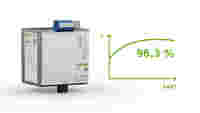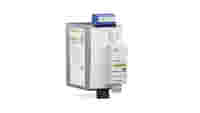The New Efficiency Champion Comes from Minden

Efficient but still economical – these are the characteristics of modern power supply units. Mechanical engineering and system design have seen a rise in demands for more efficient power supplies. So, what does a power supply unit need in order to maximize efficiency? And what is the connection between efficiency and size? WAGO has created a new solution with the Pro 2 Power Supply, which meets present and future market demands. This report provides you with more information about the economic and ecological aspects and the significance of high efficiency, as well as some of the other challenges that a modern power supply unit needs to meet.
WAGO Power Loss Cost Calculator
How much can the WAGO Pro 2 Power Supply save you? Find out now! The WAGO Power Loss Cost Calculator is available online.
